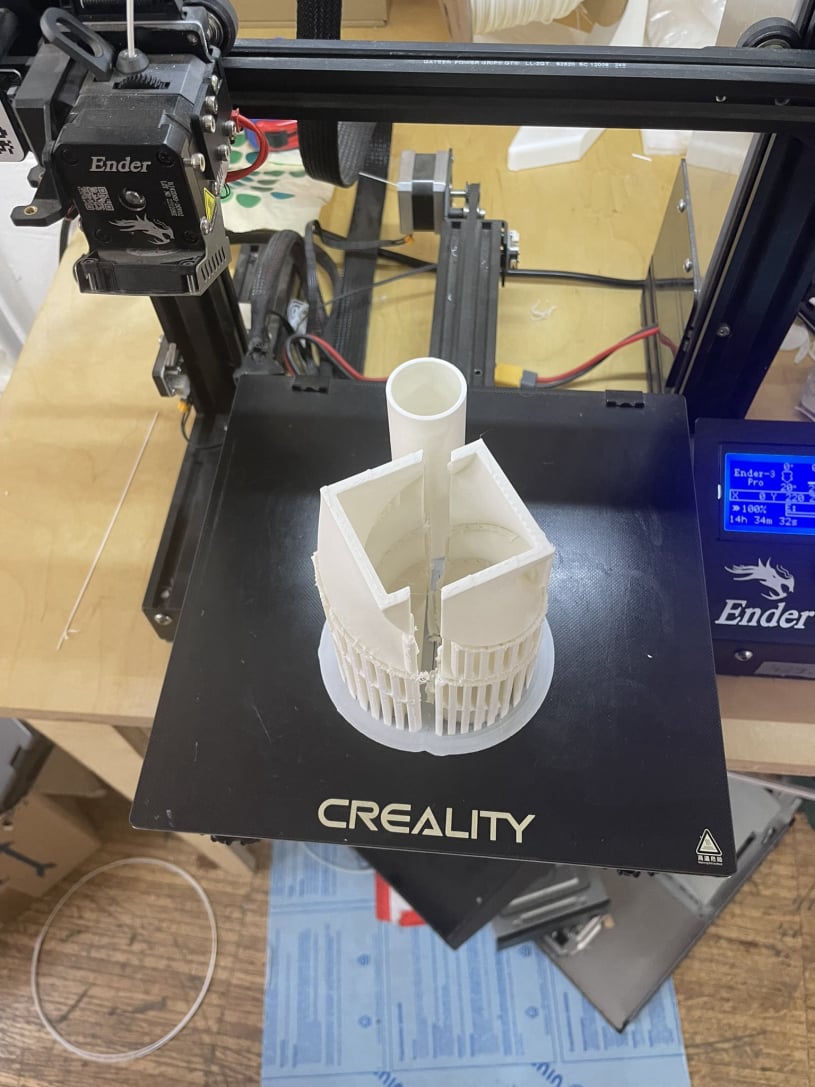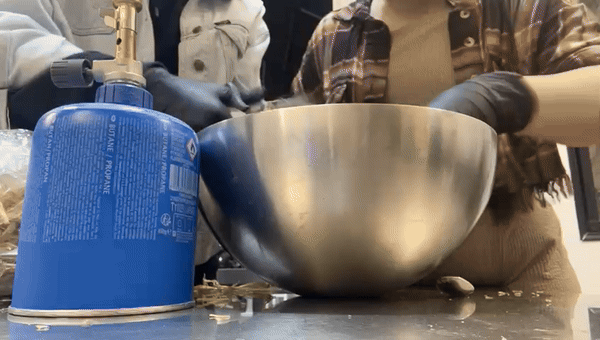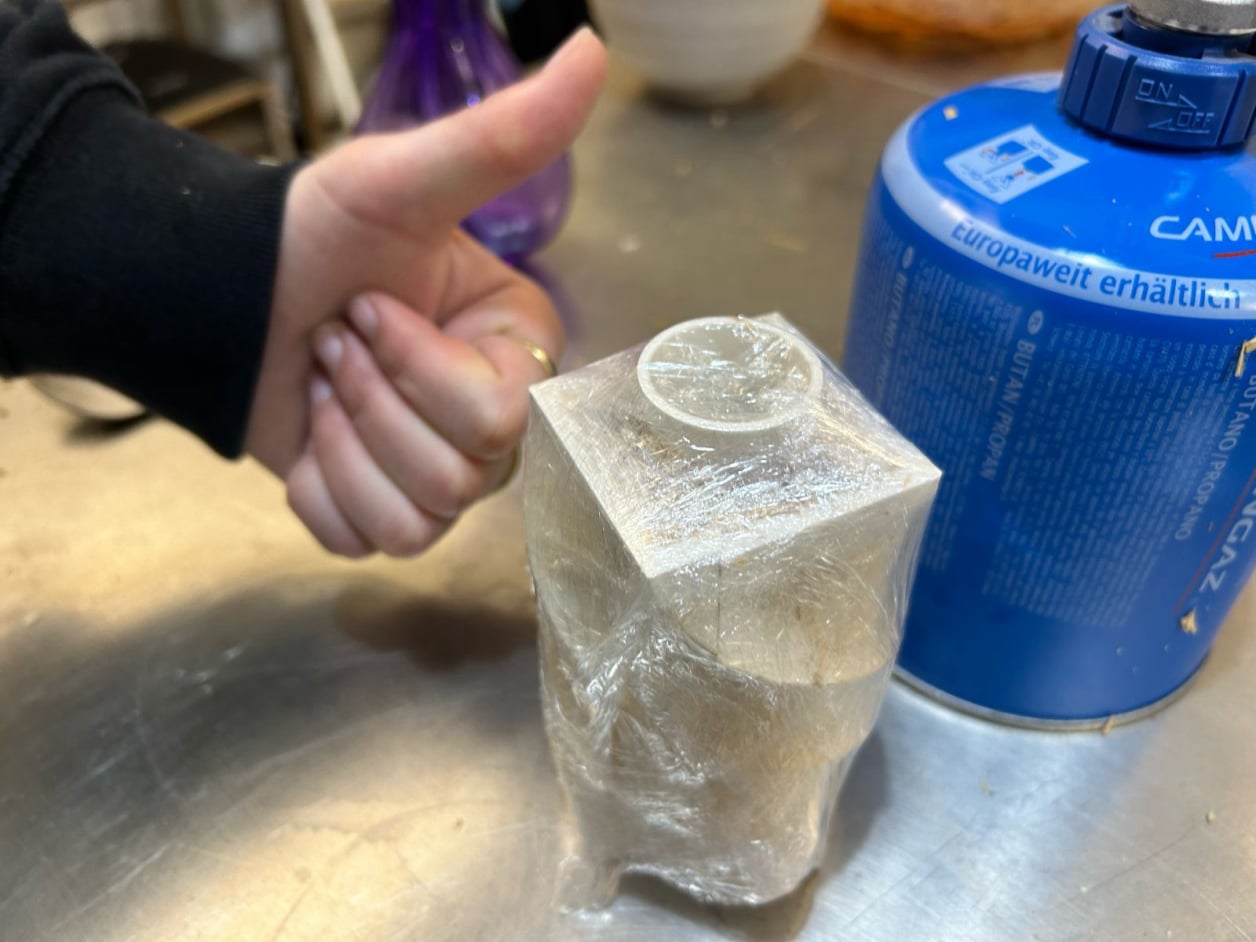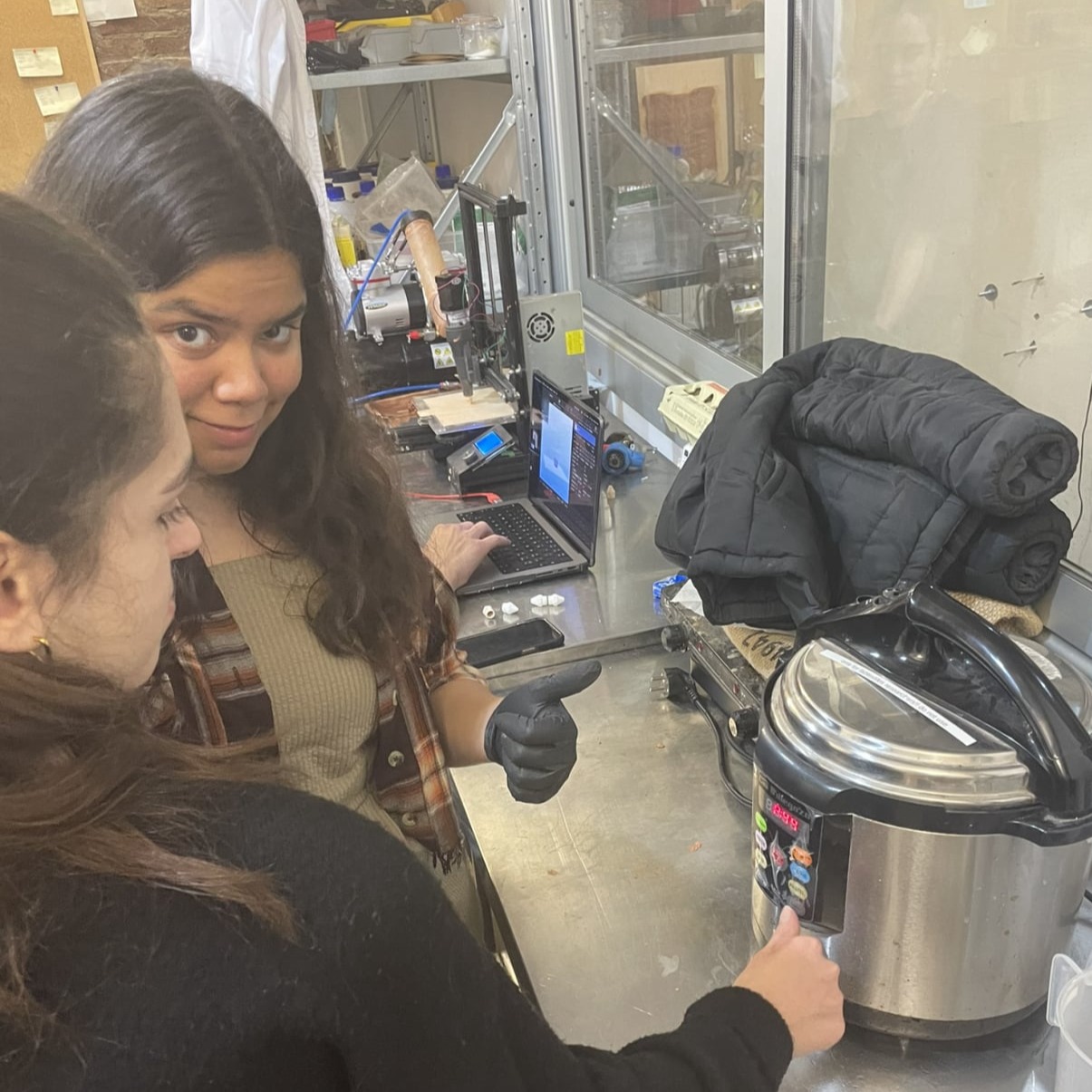
Process
Mold: We had to create the mold for the candlestick to grow on Rhino. This was my first time creating a 3D model on my own from scratch. I decided to create a more creative shape than a simple cylinder or cube to learn more complex commands on Rhino... It took me much longer than what any of my designer colleagues would have taken to build this spiral shaped candlestick mold, but I did it, and am very proud of my first 3D model! Extrusions, caps, boolean differences and splits have no secret to me anymore! The candlestick mold also needed a cylinder to be placed in the middle to allow space for the future candle. After saving the file in .stl, slicing and adding support in Cura, I sent my first 3D model to the 3D printer in our classroom. At first the filament wasn't sticking to the printer's bed, so I applied some fixating spray and started a new impression. The printing lasted 15h, so I left it overnight and came back to the above model the next day. After taking the supporting elements out, the mold was ready to be cast!
Casting: The next step consists in cultivating the mycelium in the mold for it grow and take the shape of a candlestick. This is a very delicate intervention that needs to be done in a sterile environment to avoid mould on our final artefact. Sterilisation was achieved thanks to a pressure cooker and a lot of alcohol sprayed on every tool used in the process. The mycelium gets cultivated thanks to a mix of straw, flour, sampled mycelium and distilled water, which is casted in the mold.
Cultivation: The mold was left in my class locker away from direct light exposure. Mycelium takes time to grow so we currently cannot see any but we will check again in a few days/weeks to see whether our cultivation was successful. Hopefully the mycelium candlestick will be alive and standing!

Recipe
Tools
Bunsen Burner
Large bowl
Alcohol
Pressure cooker
Cellophane
Latex gloves
Heat resistant plastic bags
Mask
Needle
Ingredients
Flour
Mycelium substrate
Straw for animals
Distilled water
1. Sterilisation
Pour water in your pressure cooker and put it to boil. Take enough straw to fit in your 3D printed mold and put it into the heat resistant plastic bag. When water boils, put the plastic in the pressure cooker and put it to cook for 45 min. In the meantime, light up the Bunsen Burner and sterilise the working area within the Bunsen Burner's sterile zone. Wear gloves and apply alcohol to your hands and then to the mold to sterilise it. Leave it within the burner's sterile zone.
2. Mycelium substrate
Once the straw is sterilised, take it out of the pressure cooker and transfer it from the plastic bag to the large bowl within the burner's sterile zone. Make sure you wear a mask and disinfect your hands and gloves with alcohol before manipulating the straw. Add some mycelium substrate (about 40% of the mixture), a spoon of flour, a few drops of distilled water and mix everything together.
3. Casting
Lay the mycelium mixture in your mold and wrap it with cellophane. With a needle, pierce small holes through the cellophane to allow air inside the mold. Let it rest in a dark space for a few weeks.

Key Learnings
This experiment deepened my knowledge of Rhino and the different possibilities it offers for 3D modelling. Depending on the final result, I will be able to make conclusions about my cultivation process and adapt it if needed.

Reflections
The final product isn't ready yet, so I'll wait to see the final result to make conclusions. However, experimenting with mycelium made me think of interspecies collaboration and how we can benefit from other living beings in our everyday life. While using mycelium offers sustainable alternatives to polluting materials, it is also important to think of our relationship to the mycelium and avoid falling into practices that are purely extractive of other living species. While I used mycelium to create this mold for my benefit, I could think of ways to use mycelium in a more regenerative way. Although this is not my research focus, it was interesting to explore new types of materials and the implications of designing with other living beings.